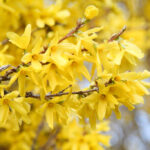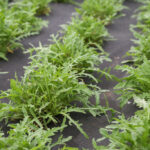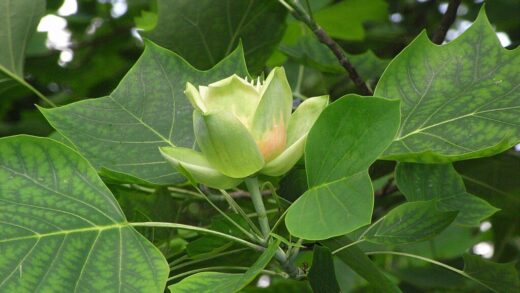The watering and fertilizing of the American tulip tree

Providing the American tulip tree with appropriate water and nutrients is fundamental to fostering its vigorous growth and ensuring its long-term health and resilience. As a species native to moist, rich bottomlands and woodland slopes, it has an inherent need for consistent moisture, especially during its establishment phase and periods of active growth. Similarly, while it can adapt to various soil types, its performance is significantly enhanced when essential nutrients are readily available. Understanding the delicate balance of when and how to water and fertilize is key to preventing stress and promoting the development of a strong, majestic tree that will grace the landscape for decades to come.
Watering is most critical during the first few years after a tulip tree has been planted. During this establishment period, the tree’s root system is still expanding into the surrounding soil, making it more vulnerable to drought stress. For the first two growing seasons, a deep and thorough watering once or twice a week is generally necessary, especially during dry spells. The goal is to moisten the entire root zone, not just the surface. A slow application of water over the root ball and surrounding area is most effective, allowing the moisture to penetrate deeply rather than running off. Using a soaker hose or simply letting a regular hose trickle at the base of the tree for an extended period are excellent methods to achieve this deep watering.
The frequency of watering should be adjusted based on weather conditions and soil type. During periods of hot, dry weather, the tree will require more frequent watering than during cool, rainy periods. It is always best to check the soil moisture before watering. You can do this by digging a few inches down into the soil near the root ball; if the soil feels dry to the touch, it is time to water. Sandy soils, which drain quickly, will need more frequent irrigation than heavier clay soils that retain moisture for longer. The key is to aim for consistently moist soil, not perpetually saturated or waterlogged conditions, which can be just as harmful as drought.
Once an American tulip tree is well-established, typically after two to three years, its extensive root system makes it much more drought-tolerant. In many climates, mature trees may only require supplemental watering during prolonged periods of severe drought. However, even for established trees, providing a deep watering during extended dry spells in the summer can help prevent stress, which can manifest as premature leaf drop or a weakened defense against pests and diseases. Monitoring the tree’s appearance is a good indicator; if the leaves begin to look slightly wilted or lose their vibrant color during a dry period, it is a clear sign that the tree would benefit from a good, deep soak.
When watering, it is important to apply the water over the tree’s entire root zone. For a young tree, this is the area of the original root ball and a few feet beyond. For a mature tree, the root system can extend well beyond the dripline (the outer edge of the canopy). Applying water only at the base of the trunk is insufficient for larger trees. Using a sprinkler or moving a soaker hose around the area under the canopy can provide more comprehensive coverage. Watering early in the morning is also more efficient than watering in the middle of the day, as it minimizes water loss to evaporation and allows the foliage to dry before nightfall, reducing the risk of fungal diseases.
More articles on this topic
Understanding fertilizer needs
The American tulip tree generally does not have high fertilizer demands, particularly when planted in soil that is rich in organic matter. In a healthy soil environment, natural decomposition processes often provide most of the nutrients the tree requires for steady growth. However, in poorer, less fertile soils or in urban and suburban landscapes where topsoil may be thin or compacted, supplemental fertilization can provide a significant boost to the tree’s vigor and overall health. Before applying any fertilizer, it is always a good practice to conduct a soil test. A soil test will provide a detailed analysis of your soil’s nutrient content and pH, allowing you to make an informed decision about what, if any, amendments are truly needed.
If fertilization is deemed necessary, the best time to apply it is in the late fall after the leaves have dropped or in the early spring before new growth begins. Fertilizing during these dormant periods allows the nutrients to be absorbed and available to the tree’s roots when it starts its active growth phase in the spring. Avoid fertilizing in late summer, as this can stimulate a new flush of tender growth that may not have time to harden off before the first frost, making it susceptible to winter damage. A slow-release granular fertilizer formulated for trees and shrubs is generally the best choice, as it provides a steady supply of nutrients over an extended period.
When choosing a fertilizer, a balanced formula such as 10-10-10 or a formulation that is slightly higher in nitrogen (the first number) is often suitable for promoting healthy leaf and stem growth. Nitrogen is a key component of chlorophyll and is essential for photosynthesis. However, it is important not to over-fertilize, as an excess of nitrogen can lead to weak, leggy growth that is more prone to pests and breakage. It can also inhibit flowering in mature trees. Following the application rates recommended on the fertilizer packaging is crucial to avoid damaging the tree or causing nutrient runoff into the environment.
The method of fertilizer application is also important for its effectiveness. The most common and effective method for trees is to broadcast the granular fertilizer evenly over the entire root zone, which extends from near the trunk out to the dripline and often slightly beyond. Avoid concentrating the fertilizer in a small ring at the base of the trunk, as this can burn the roots. After spreading the fertilizer, it should be lightly raked into the top layer of soil or mulch and then watered in thoroughly. This helps to move the nutrients down into the root zone where the tree can access them.
More articles on this topic
The role of organic matter
Incorporating organic matter into the soil is one of the most beneficial practices for the long-term health of an American tulip tree, often reducing or eliminating the need for synthetic fertilizers. Organic materials such as compost, leaf mold, and well-rotted manure improve the soil in numerous ways. They enhance soil structure, creating better aeration and drainage in heavy clay soils while increasing water and nutrient retention in sandy soils. This creates a more resilient soil environment that is less prone to the extremes of being too wet or too dry. A soil rich in organic matter provides the ideal growing conditions that this woodland tree naturally prefers.
Organic matter is also a vital source of a wide range of essential plant nutrients. As microorganisms in the soil break down the organic material, they release nutrients in a slow and steady manner that is perfectly suited to the tree’s needs. This process, known as mineralization, provides a continuous supply of not only the major nutrients like nitrogen, phosphorus, and potassium, but also a full spectrum of micronutrients that are essential for various plant functions. This natural, slow-release fertilization is far superior to the sudden jolt provided by many synthetic fertilizers and supports a healthy, balanced ecosystem within the soil.
One of the easiest and most effective ways to continuously add organic matter is by maintaining a layer of organic mulch around the base of the tree. A 3- to 4-inch layer of wood chips, shredded bark, or leaf litter spread over the root zone serves multiple purposes. It insulates the soil from temperature extremes, conserves moisture by reducing evaporation, and suppresses weed growth. As the mulch slowly decomposes over time, it constantly replenishes the organic content of the topsoil, mimicking the natural process of leaf litter accumulation on a forest floor. This simple act can dramatically improve the health and vigor of your tulip tree.
Furthermore, a soil that is rich in organic matter supports a diverse and thriving community of beneficial soil organisms. Earthworms, beneficial bacteria, and mycorrhizal fungi all flourish in such an environment. Mycorrhizal fungi, in particular, form a symbiotic relationship with the tree’s roots, vastly extending their reach and ability to absorb water and nutrients, especially phosphorus. This intricate soil food web helps to cycle nutrients, improve soil structure, and can even help protect the tree from certain soil-borne pathogens. By focusing on building healthy, organic-rich soil, you are creating a self-sustaining system that supports the optimal health of your American tulip tree.
Recognizing signs of stress
Observing your American tulip tree for signs of water or nutrient-related stress is a key aspect of proactive care. Water stress, both from too little and too much water, often first appears in the leaves. During a drought, the leaves may start to wilt or droop during the hottest part of the day. If the stress continues, the edges of the leaves may turn brown and crispy, a condition known as leaf scorch. In severe cases, the tree may begin to shed leaves prematurely, starting with the oldest, inner leaves, as a survival mechanism to conserve water. Conversely, a tree suffering from waterlogged soil and root rot may exhibit similar symptoms, such as yellowing leaves (chlorosis) and wilting, because the damaged roots are unable to take up water effectively.
Nutrient deficiencies also manifest themselves through visible symptoms in the foliage. A common issue in alkaline soils is iron chlorosis, where the leaves turn a pale yellow or even whitish color while the veins remain green. This indicates that the tree is unable to absorb enough iron due to the high soil pH. A general nitrogen deficiency will often present as a uniform pale green or yellowish color across the entire leaf, typically affecting the older leaves first. Other deficiencies, such as a lack of magnesium or manganese, can cause mottled patterns or distinct yellowing between the veins. Recognizing these patterns can help you diagnose the specific nutrient that is lacking.
Stunted growth is another clear indicator that the tree may be suffering from a lack of water or essential nutrients. A healthy young tulip tree is a fast grower, often adding more than two feet of height per year. If you notice that your tree’s annual growth is significantly less than expected, or if the new leaves it produces are unusually small, it is a strong signal that something is amiss in its environment. This poor vigor can be a direct result of inadequate resources, which limits the tree’s ability to produce the energy needed for robust growth. Investigating soil moisture levels and nutrient content should be the first step in addressing such a problem.
In addition to foliage symptoms and poor growth, a stressed tree is often more susceptible to secondary problems like pest infestations and diseases. Insects like aphids and scale are often more attracted to trees that are weakened by environmental stress. Similarly, canker diseases and wood-boring insects are more likely to successfully attack a tree whose natural defenses have been compromised by drought or nutrient deficiencies. Therefore, paying close attention to the primary signs of water and nutrient stress and correcting the underlying issues promptly is not just about improving the tree’s appearance; it is a critical part of its overall pest and disease management strategy.


















